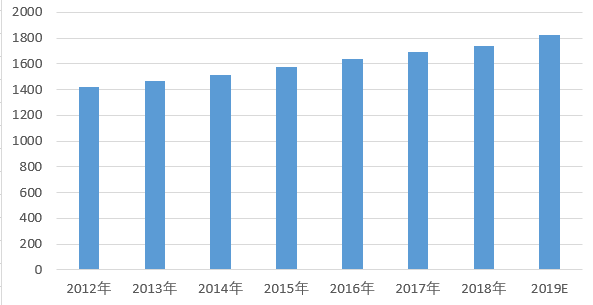休闲食品的营养标签的消费者心理研究毕业论文
2020-02-15 11:18:52
摘 要
随着我国经济快速发展和居民可支配收入的提高,休闲食品逐步成为人们生活必需品,除了满足消费者消遣娱乐,也正往“一日三餐”外的“第四餐”化发展。我国休闲食品进入不断创新和发展新阶段。与此同时,随着人民生活方式的改变,与膳食摄入的变化相关的疾病愈见高发,消费者对于休闲食品安全、健康、营养的关注度越来越高。针对食品营养安全问题,我国颁布了《食品营养标签管理规范》和GB 28050—2011《预包装食品营养标签通则》。标签法规已经发展了近十年,那食品营养标签是否发挥了其应有的作用呢?笔者带着这个疑问进行本次研究,从七大类休闲食品的营养标签上着手,通过深度访谈和问卷调查的方式,研究不同消费者对于不同品类休闲食品营养标签的心理认知、情感态度问题。营养标签是企业进行宣教和传播的有效途径之一。本研究可为食品企业提高市场的一手信息,为其满足消费者需求提供线索。营养标签同时也是消费获取营养信息和防范膳食性慢性疾病的有效工具。本研究为消费者提供合理认知和使用营养标签建议。
本研究共分为五个章节。第一章为绪论。主要介绍研究的背景、目的、意义、内容、方法以及国内外文献综述。第二章为与本研究相关的理论基础。结合广告学中的AIDAS原理,定义消费者对休闲食品的营养标签的认知过程、态度过程和行为过程中的相关概念。第三章为研究方法与设计。提出本研究的假设,采用定量分析并辅以定性分析。第四章为数据收集与分析。对所选样本采用问卷调查和深度访谈,收集数据并进行描述性分析、方差分析和文本分析,从而验证上述假设。第五章为结论与讨论。总结归纳研究结论,同时提出几点建议,为企业和消费者提供一点帮助。
研究数据分析显示,消费者对营养标签缺乏准确和完整的认知,营养标签的关注和受重视程度还不够高。消费者对营养标签的功用价值普遍认同,不过对其真实性存疑。特别地,性别对于营养标签和态度皆无显著性影响,受教育程度是主要影响因素,其次是年龄。
关键词:休闲食品;营养标签;消费者认知;消费者态度
Abstract
With the rapid development of China's economy and the increase of disposable income of residents, snack foods have gradually become a necessity for people's daily life. In addition to satisfying consumers' entertainment, they are also developing a “fourth meal” outside the “three meals a day”. China's snack foods have entered a new stage of continuous innovation and development. At the same time, with the changes in people's lifestyles, the diseases associated with changes in dietary intake are becoming more common, and consumers are paying more and more attention to the safety, health and nutrition of snack foods. In response to food nutrition and safety issues, China has promulgated the "Food Nutrition Label Management Regulations" and GB 28050-2011 "Pre-packaged Food Nutrition Labels General Principles". The labeling regulations have been developed for nearly a decade. Has the food nutrition label played its due role? The author took this question to conduct this research, starting with the nutrition label of seven categories of snack foods, through in-depth interviews and questionnaires. The way of investigation is to study the psychological cognition and emotional attitudes of different consumers on the nutrition label of different types of snack foods. Nutrition labeling is one of the effective ways for companies to conduct education and communication. This research can provide first-hand information for food companies to improve their market and provide clues to meet consumer needs. Nutrition labels are also an effective tool for consuming nutrition information and preventing dietary chronic diseases. This study provides consumers with a reasonable understanding and recommendations for using nutrition labels.
The study is divided into five chapters. The first chapter is the introduction. It mainly introduces the background, purpose, significance, content, methods and literature review at home and abroad. The second chapter is the theoretical basis related to this research. Combined with the AIDAS principle in advertising, the consumer defines the cognitive process, attitude process and related concepts in the process of nutrition labeling of snack foods. The third chapter is research methods and design. The hypothesis of this study was presented using quantitative analysis supplemented by qualitative analysis. The fourth chapter is data collection and analysis. The above assumptions were validated by questionnaires and in-depth interviews with selected samples, data collection and descriptive analysis, regression analysis and text analysis. The fifth chapter is the conclusion and discussion. Summarize the conclusions of the research and make some suggestions to provide some help for enterprises and consumers.
Analysis of research data shows that consumers lack accurate and complete knowledge of nutrition labels, and the attention and attention of nutrition labels is not high enough. Consumers generally agree on the value of nutrition labels, but doubt their authenticity. In particular, gender has no significant effect on nutrition labeling and attitudes, and education is the main influencing factor, followed by age.
Key words: Snack food; Nutrition label; Consumer perception; Consumer attitude
目 录
摘要 I
Abstract II
第1章 绪论 3
1.1研究背景 3
1.2目的及意义 4
1.2.1研究目的 4
1.2.2研究意义 4
1.3国内外文献综述 5
1.3.1营养标签法规发展 5
1.3.2消费者食品营养标签认知研究 5
1.3.3消费者食品营养标签态度研究 6
1.4研究内容与方法 6
1.4.1研究内容 6
1.4.2研究方法 7
1.4.3研究技术路线 8
第2章 与本研究相关的理论基础 9
2.1AIDAS理论 9
2.2休闲食品概述 9
2.2.1休闲食品 9
2.2.2营养标签 10
2.3消费者认知 10
2.4消费者态度 10
2.5消费者行为 11
第3章 研究方法与设计 12
3.1研究假设与研究框架 12
3.1.1研究假设 12
3.1.2研究框架 13
3.2定量研究 13
3.3定性研究 14
第4章 数据收集与分析 15
4.1样本选择及数据收集 15
4.1.1问卷法 15
4.1.2访谈法 15
4.2描述性统计分析 16
4.3方差分析 16
4.5文本分析 17
4.6实证研究结论汇总 18
第5章 总结与讨论 19
5.1研究结论 19
5.2研究局限性 19
5.3研究展望 20
参考文献 21
附录A 23
致谢 29
第1章 绪论
1.1研究背景
“民以食为天”。中国传统饮食文化源远流长。“一日三餐”制的饮食模式传古至今。随着我国国民经济持续稳健快速增长,在产业升级和消费转型的市场环境下,休闲食品作为一种正餐以外、有一定充饥性和消费场景化的“市场新宠”,正以雨后春笋般的增长速度跻身食品行业。数据显示,从2011年开始,截止2017年,中国休闲食品销售量以年均复合增长率3.58%的增速不断增长,销售量也从2012年的1420万吨增长至2017年的1693万吨,实现了百万吨销量的增长。初步统计2018年全年中国休闲食品销售量将达1749万吨,到2019年全国休闲食品销售量有望达到1826万吨。
 表1.1 2012—2019年中国休闲食品销售量统计及预测(万吨)
表1.1 2012—2019年中国休闲食品销售量统计及预测(万吨)
近年来,在网络文化的催化下,辣条被奉为“童年味道”的象征,以500亿元年产值成为休闲食品中头号“网红”。2015年5月27日,国家食药监总局出台了《关于严格加强调味面制品等休闲食品的监管工作的通知》。2019年3月15日,2019年中央广播电视总台3·15晚会曝光了辣条的不合格生产,工厂的生产条件极不卫生,无任何卫生防护措施。休闲食品安全问题再次浮现消费者视野。调查显示,流行于儿童、青少年尤其是学生群体间的“五毛零食”(即辣条)呈现油高、盐高、甜高等危害,影响少年儿童的健康成长。一包辣条引发消费者对食品安全、健康的关注。
在食品安全问题面前,再“红”再“专”的食品品牌也遭受着严厉的考验。2019年3月15日,有媒体曝光称,周黑鸭江西南昌一门店仍在售卖超过公司规定售卖期限的产品。该门店存在严重的欺客行为,通过卑劣的手段演示过期产品,而且还不提供小票,欲求责任无法追溯到店。同时,上岗店员没有健康证,店内冷藏温度、消毒流程形同虚设。令人唏嘘的是,周黑鸭在上市后,三年持续营业收入和利润双双下滑。2019年4月30日周黑鸭发布了2018年年报,据财报显示:相较于2017年,2018年的营业收入减少了1.2%,净利润也降低了29.1%,仅实现营收入32.11亿元,净利润下滑至5.4亿元。日销6.8亿的三只松鼠也不容例外,截止至2017年8月一年左右的时间内,三只松鼠被14名消费者纷纷起诉,共计索赔金额200多万元。涉及诉讼食品包括:卤藕、雪菊、冻干柠檬片、瓜子、和田骏枣等。
据《中国居民营养与慢性病状况报告》显示,随着经济发展,中国居民的膳食和营养状况普遍得到改善,甚至因为“吃得太好”,超重肥胖、三高等问题凸显[1]。现代医学发现,70%的慢性病包括糖尿病、心血管疾病、癌症、肥胖症等都与营养素摄取的不平衡有关。刘林芝在《健康新主张》发言中指出,中国已经发展成为第一慢性病大国、第一三高症大国。食品营养与健康问题突出。休闲食品在“第四餐”化的发展过程中,正面临着严峻的挑战。
1.2目的及意义
1.2.1研究目的
走进一家超市,或者一家便利店,薯片、鱼仔干、开心果等琳琅满目的休闲食品比比皆是。随着“乐事”、“良品铺子”、“三只松鼠”等休闲食品品牌相继走红,休闲食品也步入一个快速发展的轨道。然而由膳食模式改变导致的超重、三高、非传染慢性疾病成为威胁居民健康的主要原因。国民消费者食品安全、营养、健康意识在逐日增强。休闲食品消费格局从原来的温饱型逐渐向营养型、健康型转化[2]。在面临营养健康消费升级和需求转型、食品安全等严峻的市场环境下,休闲食品厂商又该如何出奇制胜,继续抓住市场的青睐?本研究通过对比分析不同消费群体之间、不同休闲食品品类之间的休闲食品包装营养标签的消费者心理,旨在研究出消费者对于休闲食品营养标签认知现状和情感态度,为消费者购买行为研究提供一点帮助,为企业满足市场需求提供一点线索。
1.2.2研究意义
食品营养、健康、安全问题关乎每一位人。从经济角度来看,本研究可以为相关休闲食品企业提供一手的市场信息,为其满足市场需求实现盈利贡献一份力量。从社会层面上看,本研究以食品营养、健康、安全为出发点,关切我国民生问题,希望能够激发一部分人群对营养标签的正确认识和关注度。此外,本研究着手研究消费者对于休闲食品营养标签的认知、态度情况,可为消费者对于休闲食品营养标签的偏好、使用意愿以及行为影响因素提供一点参考价值。
1.3国内外文献综述
1.3.1营养标签法规发展
2008年5月1日重国施行《食品营养标签管理规范》鼓励食品企业用营养标签标注产品。2009年2月28日颁布的《中华人民共和国食品安全法》第二十条规定中强调了食品营养标签被确定为食品安全的一部分。




